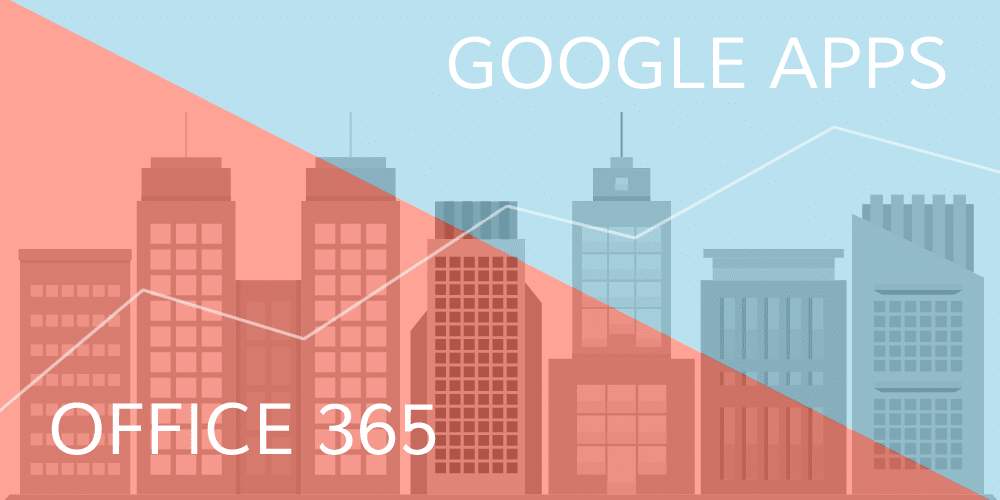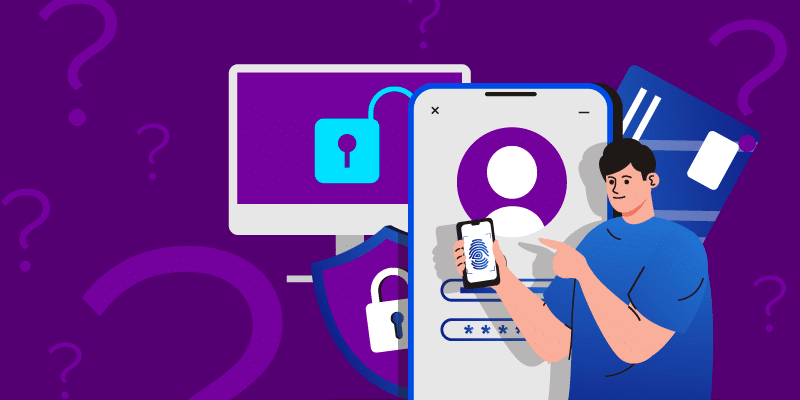Google Apps vs Office 365: Comparing the Usage, Adoption, and Effectiveness of Cloud IT's Power Players
David Politis
July 8, 2015
11 minute read

TABLE OF CONTENTS
ToggleLast month, we released Trends in Cloud IT: Dissecting Adoption Across Thousands of Organizations. The post helped illustrate the growing shift towards cloud IT, based off survey responses from 1,500 IT professionals. We’re back with the second installment of Trends in Cloud IT, which focuses on the two major players in the cloud office system space: Google Apps and Office 365.
Read our 2016 G Suite vs. Office 365 Trends in Cloud IT Report.
Some of the key questions this post will answer are:
- How do the Google Apps and Office 365 customer bases compare to each other?
- How much money are companies saving as they move to Google Apps and Office 365?
- How are companies actually executing their move to the cloud (all at once or in phases)?
- Are end users actually working in the cloud or are they continuing to work in desktop versions of the software?
- How do Google Apps and Office 365 affect workplace productivity and collaboration?
We felt it was important to provide a brief history of Google Apps and Office 365, but if you would like to skip straight to the survey results, click here.
The Rise of Google Apps and Office 365
Sections
Google Apps vs Office 365
Demographic Information
Deployment Strategies
Employee Age Range
Suite Utilization
Increase in Effectiveness
Savings by Organization Size
Feature Ratings
Cloud Adoption
In August 2006, Google launched Google Apps for Your Domain, an early predecessor to Google Apps for Work and Education. Google Apps has now grown to include the tools many of us know and use today—Gmail, Hangouts, Google Calendar, Google Drive, and more. Despite the rapid adoption of Google Apps, especially in the education system, it wasn’t always viewed as the transformative enterprise product that we know today. When Google Apps for Your Domain was released, cloud-based services were still in their infancy. Amazon’s Elastic Compute cloud (EC2) had just launched and the cloud was viewed by many as a passing fad. But Google pressed on. And in 2010, when Google announced that Google Apps was no longer in beta, the suite was already in use by more than 1.75 million companies around the world.
Still, those 1.75 million companies paled in comparison to the overwhelming majority of companies running Microsoft Exchange and the Office suite. According to a 2010 Forrester report, 81% of companies were running Office 2007 at the time (not to mention the companies running older versions of Microsoft Office), while only 4% of companies were running Google’s equivalent at the time. Despite growing use, many organizations still doubted the cloud, and Microsoft’s lack of a true cloud offering was reason enough for many of their customers to delay a move. But with innovations from Google, Amazon, and many others, Microsoft was pushed into action. In 2011, Microsoft helped legitimize the cloud by introducing its own cloud office system: Office 365.
Since the introduction of Office 365, both it and Google Apps have evolved and improved—and cloud office adoption as a whole has increased. At Windows Partner Conference in 2014, Microsoft Chief Operating Officer Kevin Turner stated that Office 365 was the company’s “fastest-growing commercial product ever.” Today, one in four Microsoft enterprise customers has Office 365, according to Microsoft. Google has made headway as well, entrenching itself as a major player in the enterprise. Today, more than five million companies have gone Google.
As we discovered in our first survey post, on average Office 365 organizations are roughly two years behind Google Apps organizations in terms of cloud adoption. However, Microsoft organizations are rapidly adopting Office 365, meaning the software giant will have a significant influence on the shift to 100% cloud IT, a transition that Google has led for the most part. The story of Office 365 vs. Google Apps is just beginning, and the survey data that follows should provide greater clarity into where both platforms—and their customers—stand today.
Survey Highlights
- On average, Google Apps organizations are experiencing cost savings of 41% while organizations using Office 365 experience cost savings of 27%.
- Office 365 organizations are more than 4x larger and are five years older than Google Apps organizations.
- Office 365 IT teams are 5x the size of their Google Apps counterparts.
- 68% of Google Apps organizations roll out Google Apps all at once while 62% of Office 365 organizations choose a hybrid deployment strategy.
- Today, 0% of large enterprises (5,000+ employees) using either Google Apps or Office 365 run 100% of their IT in the cloud; by 2026, those numbers increase to 74% and 57% respectively.
- 84% of large enterprises using Google Apps experience increased collaboration compared to 72% of Office 365 enterprise organizations.
Demographic Information (Medians)
Larger organizations are far more likely to run Office 365 as opposed to Google Apps.
—
Our data reveals that Office 365 organizations have generally existed longer than those that use Google Apps. This is expected as these companies likely have a more experienced workforce who are far more accustomed to using Microsoft products.
Google Apps Deployment
Although Google Apps customers are more likely to roll out the platform all at once, some organizations are still implementing a phased strategy.
Office 365 Deployment
Office 365 customers are more likely to roll out the platform in a hybrid environment—embracing cloud IT but still strongly supporting on-premise software.
68% of Google Apps organizations rolled out Google Apps all at once while 62% of Office 365 organizations implemented a hybrid deployment strategy.
—
When looking at all organizations, the deployment strategy for Office 365 organizations is essentially the exact opposite of those deploying Google Apps.
Deployment Strategy for Microsoft Office Customers by Organization Size
Office 365 organizations are easing into the cloud, allowing employees to choose their preferred working style, rather than abruptly shifting to a cloud-only workplace. Google pushes organizations to undergo transformational change, deploying Google Apps rapidly and over the course of a weekend, or in the case of a larger organization, several weekends. Google Apps was never designed to be deployed in a hybrid environment.
In contrast, Office 365 is made to operate in a hybrid environment for a long period of time, and thus is viewed as less intimidating for Microsoft customers that are looking to transition more gradually. These results aren’t a surprise. They reflect the deployment strategies that are recommended by Google and Microsoft—along with the partners that are often brought on to help during migrations and deployments.
Aside from differing strategies, company size has a noticeable impact on deployment. Smaller organizations, regardless of whether or not they run Office 365 or Google Apps, are much more likely to move to the cloud all at once while large enterprises are more likely to move to the cloud in phases.
Employee Age Range
Younger organizations whose employee bases average between the ages of 18-34 are 55% more likely to use Google Apps than Office 365; organizations whose employee base averages between the ages of 35-54 are 19% more likely to use Office 365 than Google Apps.
—
Three years ago, I wrote an article about the increasing number of young people that are growing up Google; our data reflects this trend. Why would young entrepreneurs make the shift to Office 365 when they’ve used Google Apps for their entire lives? On the other hand, more experienced workforces may be unfamiliar with anything other than Outlook and the desktop version of the Microsoft Office suite. In fact, 44% of respondents using Office 365 chose “unfamiliarity with the browser-based experience (as opposed to desktop)” as a primary issue for end users. Even for those familiar with Microsoft, the transition to Office 365 is still significant.
“End-user training is more of a requirement now, especially as the platform evolves and changes far more rapidly than legacy solutions did (where we could more or less completely control change rates).”
—Manufacturing, Google Apps, 2,600 employees, 30+ years in operation, avg. employee age: 35-44
Suite Utilization for Cloud-based Products
Google Apps usage rates far surpass the online equivalents for Office 365, meaning many Office 365 organizations’ employees are still using desktop versions of the Office suite.
Microsoft Utilization – Cloud vs On-premise
Though Microsoft’s web usage statistics may appear discouraging at first glance, it’s important to note that Office 365 is just four years old and that many organizations using Office 365 welcome a more gradual transition to the cloud. Because Office 365 organizations are larger and have typically been in business for a longer time, hybrid deployments are more common.
As a result, it will likely take years for these organizations to fully realize the benefits of the cloud office. In contrast, the Google Apps suite was built from scratch to work in the cloud, even in browser-only environments like Chrome OS. While Google has always built for the browser and has added in functionality like offline editing, Microsoft has evolved their cloud office suite from the other direction, adding in functionality like real-time co-authoring into applications like Microsoft Word and Excel. Because of this reverse rebuild, Office 365 and the desktop version of the Office suite are still relatively independent of each other, which is to be expected. It’s also one of the reasons why we see the majority of Office 365 organizations not taking advantage of the online versions of the suite.
This may lead to Office 365 organizations experiencing less of the positive effect that the cloud office has on productivity, collaboration, and many other factors.
Average Number of Applications Used
On average, Google Apps organizations use more cloud applications (outside of the core suite) than their Office 365 counterparts. This difference may be attributed to the fact that Google Apps organizations are closer to running 100% of their IT in the cloud—as mentioned in our first Trends in Cloud IT post—making them more likely to run other cloud applications like Salesforce or Zendesk.
The third-party application ecosystems have evolved to meet the demands from customers on both ends of the spectrum. The Google Apps Marketplace was launched more than five years ago and includes thousands of applications for all types of use cases. The Office Store was officially launched just over three years ago, and mainly focuses on plug-ins for desktop applications that are part of the Office 365 suite.
Increase in Effectiveness for the Enterprise
In every size segment (SMB, MM, Enterprise), organizations using Google Apps experience greater increases in collaboration, efficiency, flexibility, productivity, mobility, and productivity than those using Office 365. —
Though Google Apps organizations benefit more across the board today, many organizations using Office 365 are underutilizing the cloud-based Office suite, limiting the potential benefits of a true cloud office environment. As these employees begin to adjust to working in the cloud, the benefits will likely become more noticeable. The cloud office greatly alters how companies operate, and as our results show, has the potential to significantly increase workforce productivity. We believe that as Office 365 usage rates increase, these numbers will start to look more similar.
Savings by Organization Size
On average, Google Apps organizations experience cost savings of 41% while organizations using Office 365 experience cost savings of 27%.
—
Regardless of whether an organization is running Office 365 or Google Apps, they are likely saving money. However, average cost savings from our respondents vary greatly depending on size and which cloud office system they run. Small organizations experience the most cost savings on average: small businesses running Google Apps save 42% on average, while those running Office 365 save 28%.
However, cost savings in medium-sized and large enterprise organizations are far from insignificant. Medium-sized Google Apps organizations save 40% on average compared to 23% for medium-sized Office 365 organizations. Large enterprise Google Apps organizations save 35% on average compared to 29% for their Office 365 counterparts.
Overall, Google Apps admins are more satisfied with features like third-party product integrations, integrations with the suite itself, file security, storage value and usability, and many other characteristics than their Office 365 counterparts.
“Moving things to the cloud helps free up a lot of busy work. [My ideal IT product] would look a lot like Office 365, just might be a little more user friendly.”
—Healthcare, Office 365, 1,200 employees, 90+ years in operation, avg. employee age: 35-44
When the Enterprise Expects to Run 100% of Their IT in the Cloud
Across the board, Office 365 organizations expect it to take longer to run 100% of their organization’s IT in the cloud; however, this doesn’t mean they are necessarily resistant to change. In many cases, they may face more obstacles on their path to adoption (or choose to make a gradual transition). It’s also important to keep in mind that Office 365 is roughly five years younger than Google Apps.
Many Office 365 organizations operate a hybrid cloud environment, running their IT partially on-premise and partially in the cloud. Our data shows that Microsoft’s hybrid cloud customers will begin to transition to running 100% of their IT in the cloud in the near future.
Today, none of our large enterprise respondents run 100% of their IT in the cloud. By 2026, 74% of Google Apps large enterprises and 57% of Office 365 large enterprises expect to run 100% of their IT in the cloud.
An increase of more than 50% for both platforms is an incredible statistic given all of the challenges these large organizations will face. For instance, large enterprises must handle moving a global workforce with country-specific and cloud-related laws and restrictions to the cloud–not to mention the challenge of moving potentially thousands of legacy applications to the cloud.
These hurdles, along with many others, are why smaller organizations adopt the Office 365 and Google Apps suites at a more rapid pace. Google Apps organizations, regardless of size segment, are quicker to run 100% of their organization’s IT in the cloud. This is potentially due to the fact that Google Apps organizations likely have significantly smaller investments in legacy on-premises applications, are smaller on average, and have a younger employee population who are likely more receptive to changes in technology. Other factors affecting cloud adoption rates may include the fact that no obvious hybrid cloud option is available for Google Apps, making organizations that choose to go Google much more susceptible to diving in head first.
Google Apps vs. Office 365
As evidenced by our last survey and the wide variety of companies moving to the cloud, we’ve learned that cloud adoption is far from a passing fad. In our analysis of the collective data, a fascinating profile of the customers that currently operate under these two platforms has begun to emerge—and the portrait that it paints is drastically different.
CloudABC: Profile of a Google Apps Organization
Disclaimer: The following description is a hypothetical example of a typical Google Apps organization based off of our data alone. CloudABC is not a real company and is in no way representative of the entire Google Apps customer base.
CloudABC, a SaaS company and Google Apps organization, was born in the cloud. Founded in 2010 by two young entrepreneurs, the company consists of 110 employees, three of which make up the IT team. CloudABC is a young company; the average employee is just 27 years old. The employee base grew up with the benefits of the internet, having likely used Google Apps at school and Gmail for their personal email. They’re accustomed to new technology and pick up on new tools quickly without the need for extensive end-user training.
Going Google was an easy choice for the co-founders, as Google Apps was the only cloud office system available at the time; the young company also couldn’t afford the heavy upfront costs of standing up an on-premises infrastructure. Within a weekend, Google Apps was fully deployed.
At CloudABC, employees work 100% in the cloud. As a result, they are experiencing noticeable increases in collaboration, efficiency, and productivity. Currently, the company runs 100% of their IT in the cloud, with 16 cloud applications operating alongside Google Apps. CloudABC plans to continue running 100% of their IT in the cloud. On the other end of the spectrum is the average Office 365 organization, a stark contrast from CloudABC.
123 Bank: Profile of an Office 365 Organization
Disclaimer: The following description is a hypothetical example of a typical Office 365 organization based off of our data alone. 123 Bank is not a real company and is in no way representative of the entire Office 365 customer base.
123 Bank, an Office 365 organization, was founded in 1982 and has made a name for itself in the financial industry. The company has developed a complex on-premises infrastructure after more than 30 years of growth. 123 Bank is a Microsoft shop through and through, with the majority of their 500 employees having used Microsoft products for their entire working lives.
Four years ago, 123 Bank’s 15-person IT team approached their leadership about moving some of their infrastructure to the cloud. At first, leadership was hesitant to embrace the cloud due to security concerns, but with Microsoft’s introduction of Office 365, they began to take the idea more seriously.
Today, 123 Bank runs a hybrid infrastructure that consists of their legacy on-premises applications, Office 365, and seven other cloud applications. They are working to replace more of their legacy applications with cloud applications, but the company has a complex on-premises infrastructure that can’t easily be replicated in the cloud.
Despite not taking full advantage of the cloud, 123 Bank is still seeing increases in productivity, collaboration, and efficiency. The leadership team at 123 Bank is ready to ramp up cloud adoption.
However, they have a problem. The average employee is 45 years old and isn’t necessarily accepting of changes in technology. They prefer to use desktop versions of the Microsoft Office suite. 123 Bank’s leadership knows that to realize the benefits that Office 365 and the cloud provide, they not only need to train their end users, but also need to convince them to actually use the cloud-based versions of the software.
What’s Next for Google Apps and Office 365?
The data above gives us an idea of what Google Apps and Office 365 organizations look like today. But as we know in technology, a lot can change in a year—or even six months.
How Google and Microsoft move forward with their cloud office systems will help shape the speed, style, and level of adoption for the rest of the cloud.
We’ll continue to monitor the cloud office system space in order to bring you the latest data and analysis regarding Google Apps and Office 365.
Up Next: The Changing Role of IT
The role of IT is evolving. No longer are IT admins sitting back and waiting to fix what breaks. Now, with the benefits of the cloud, they’re given more opportunity—and time—to spend on proactive tasks. In our next Trends in Cloud IT survey post, we’ll explore the characteristics of today’s IT admins and take an in-depth look into the changing role of IT.






